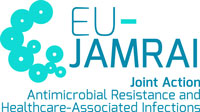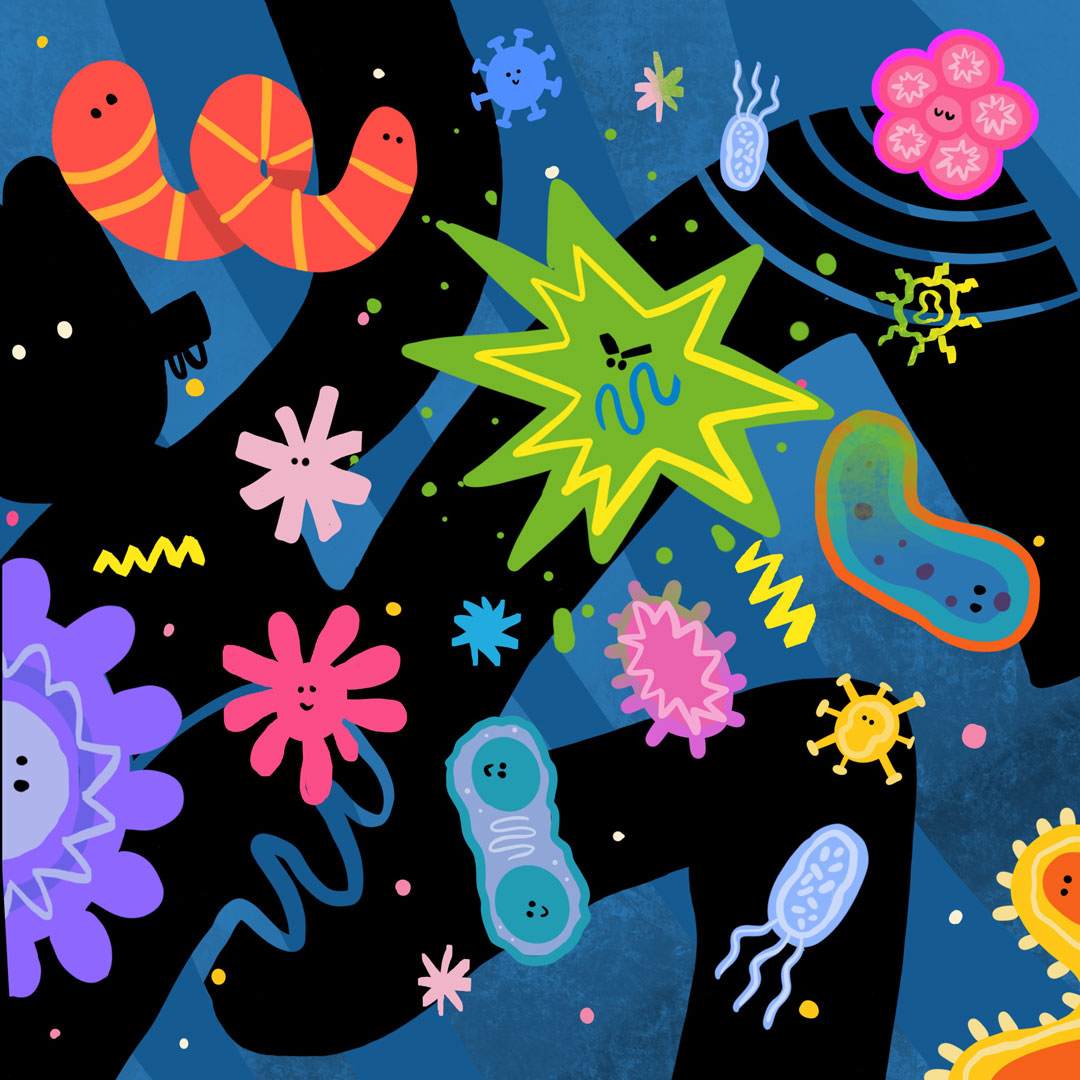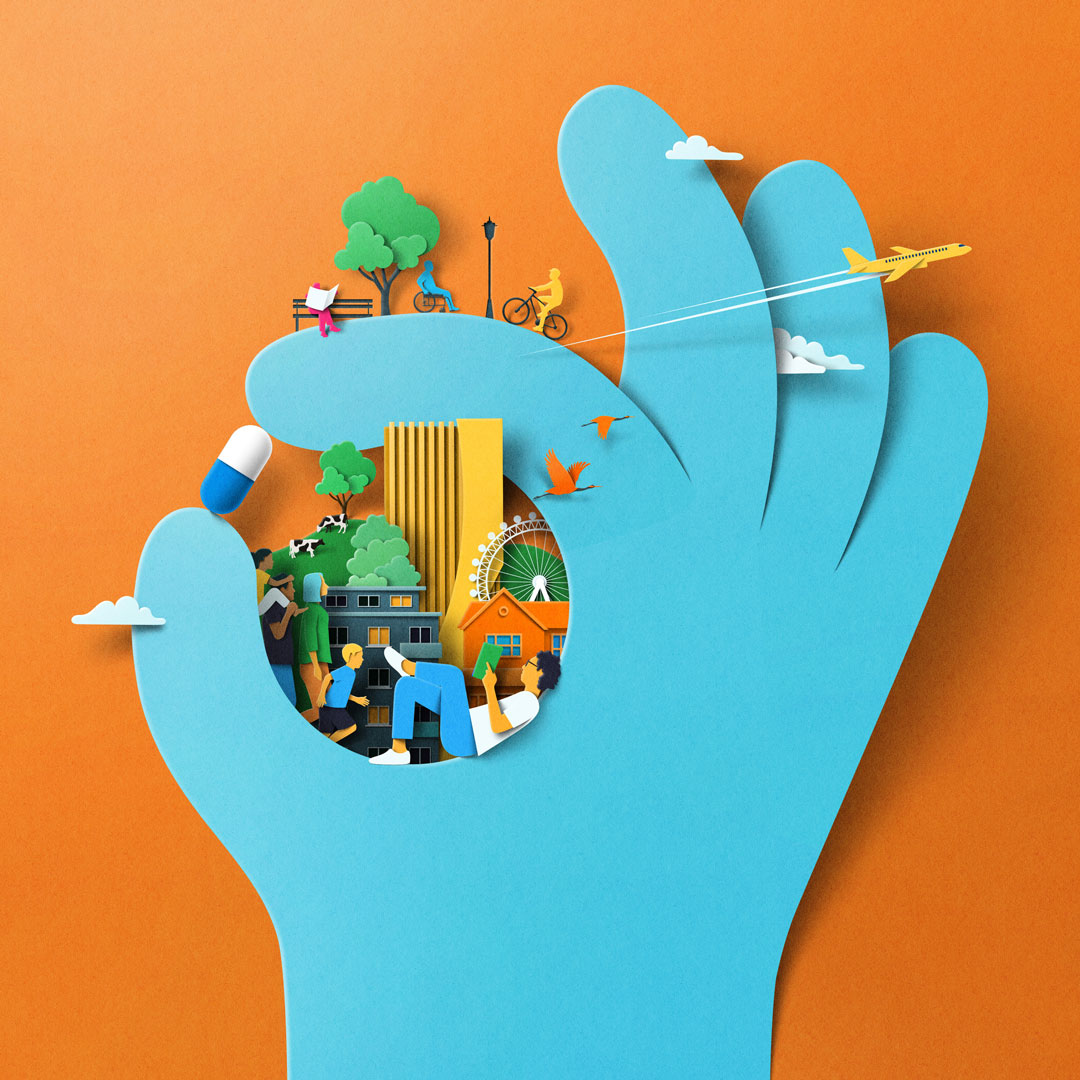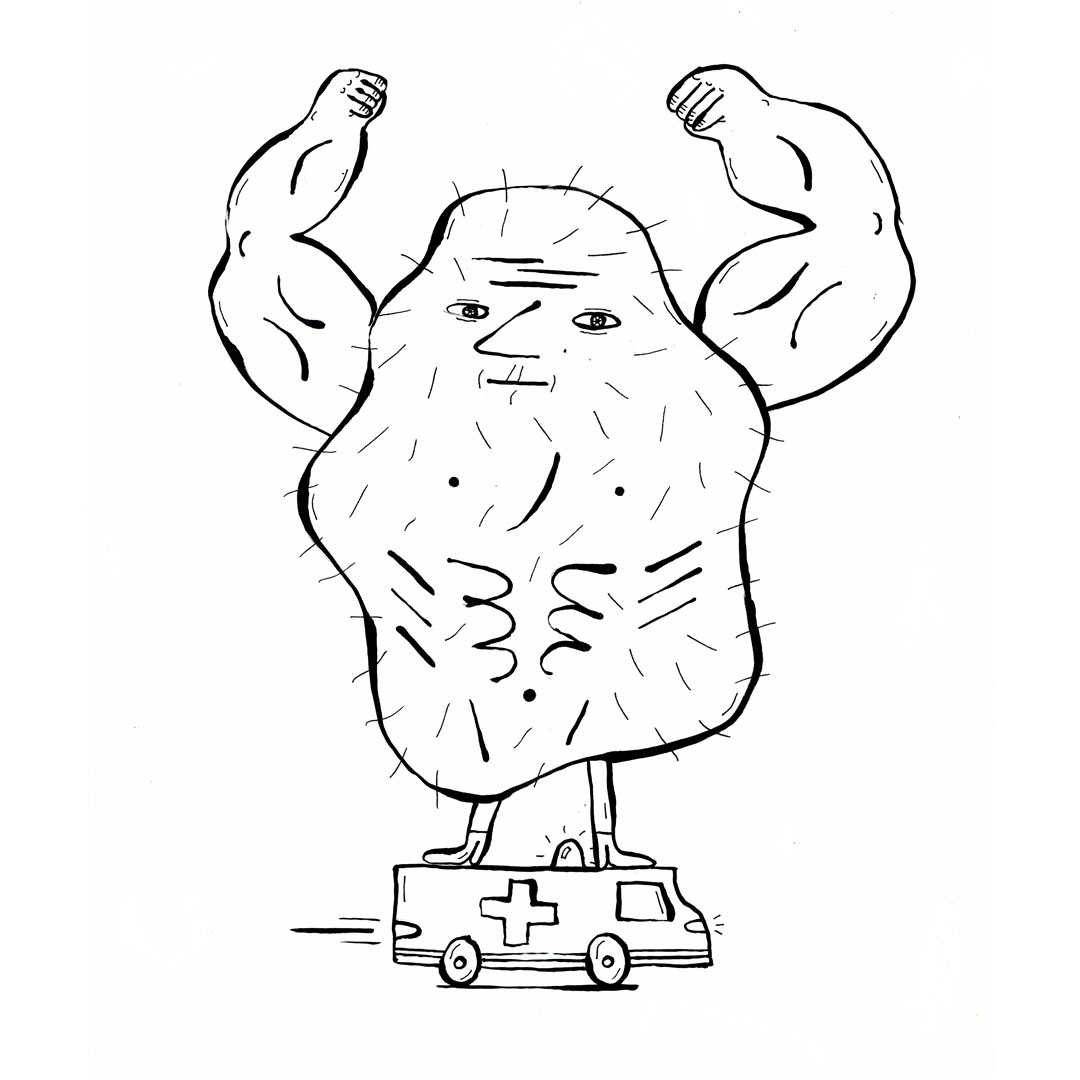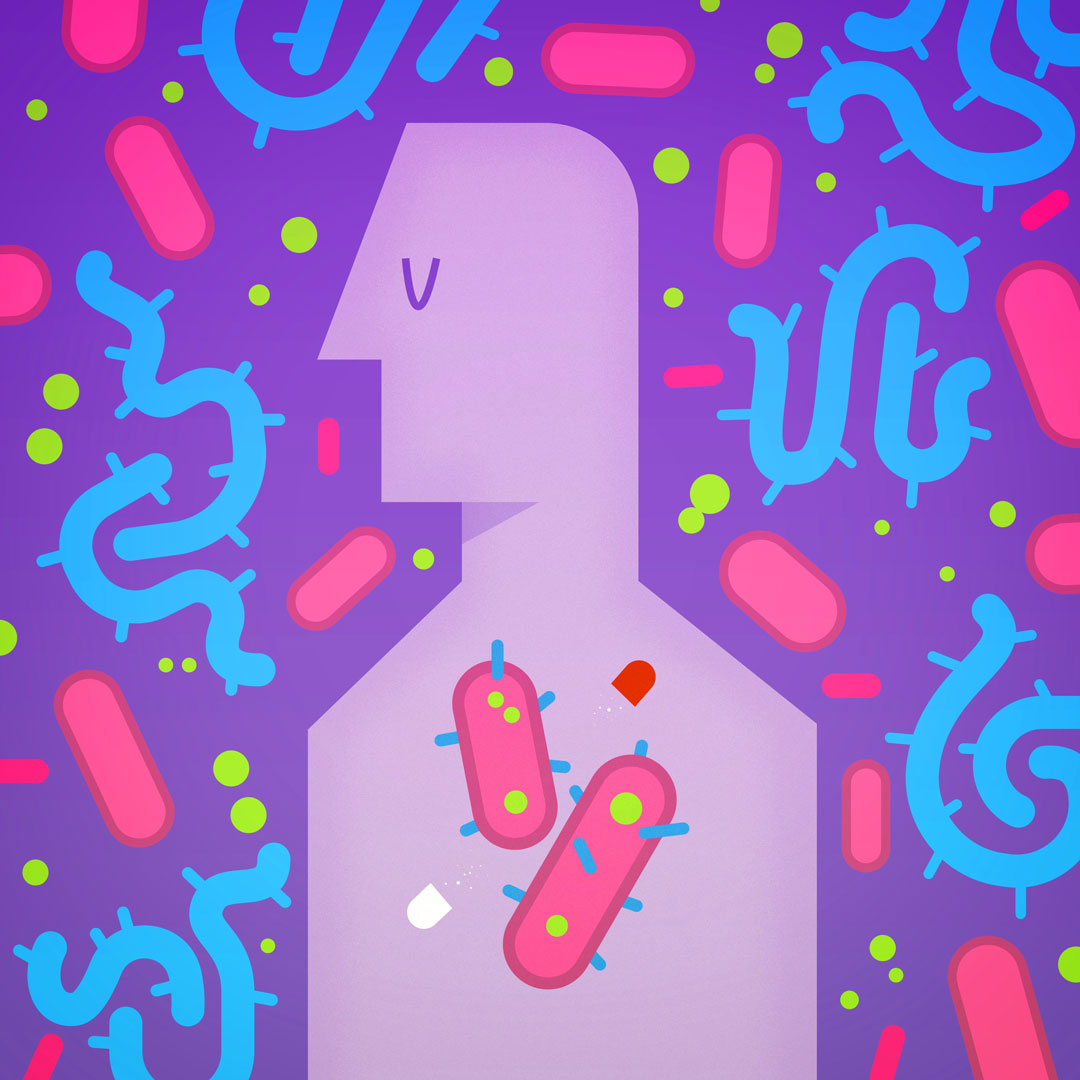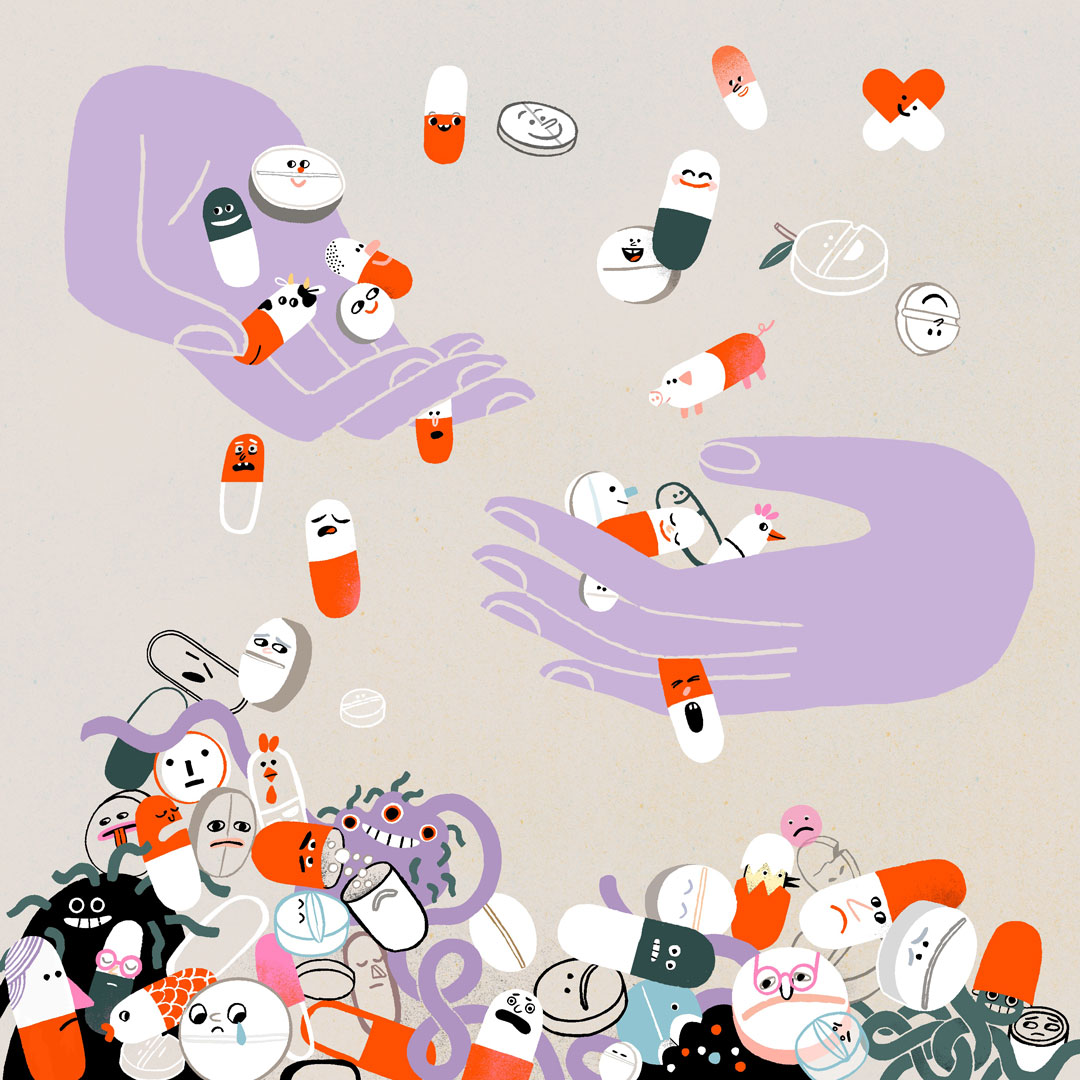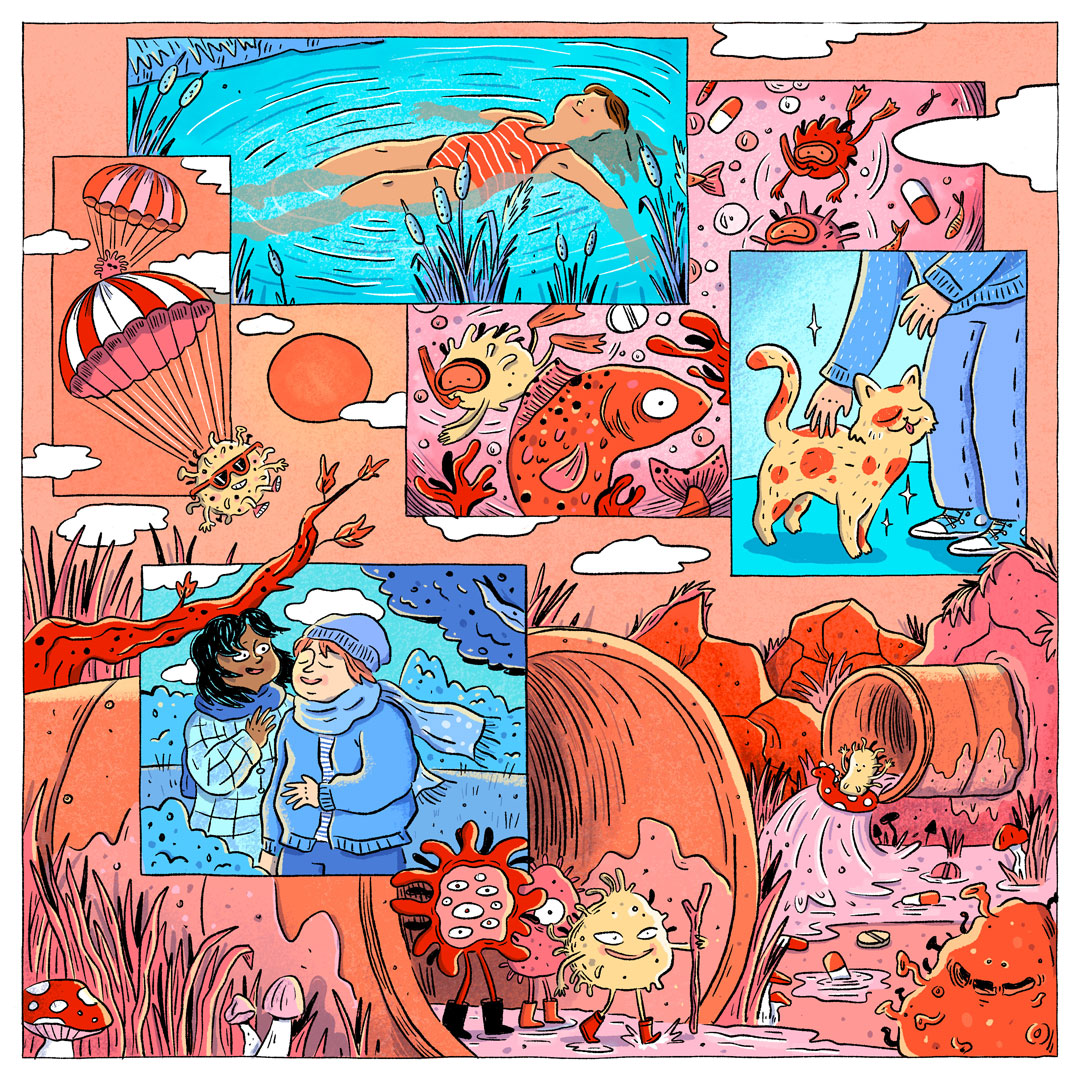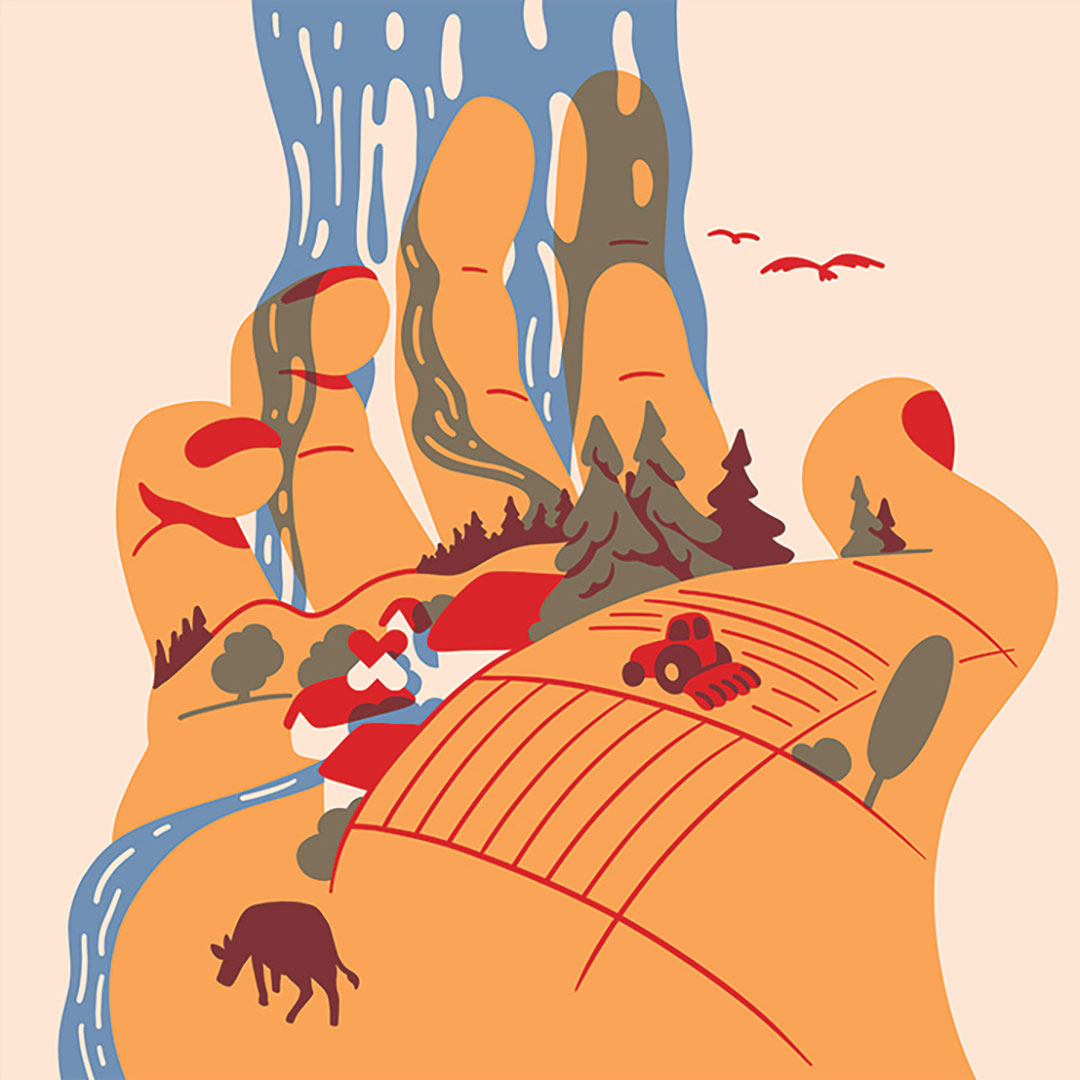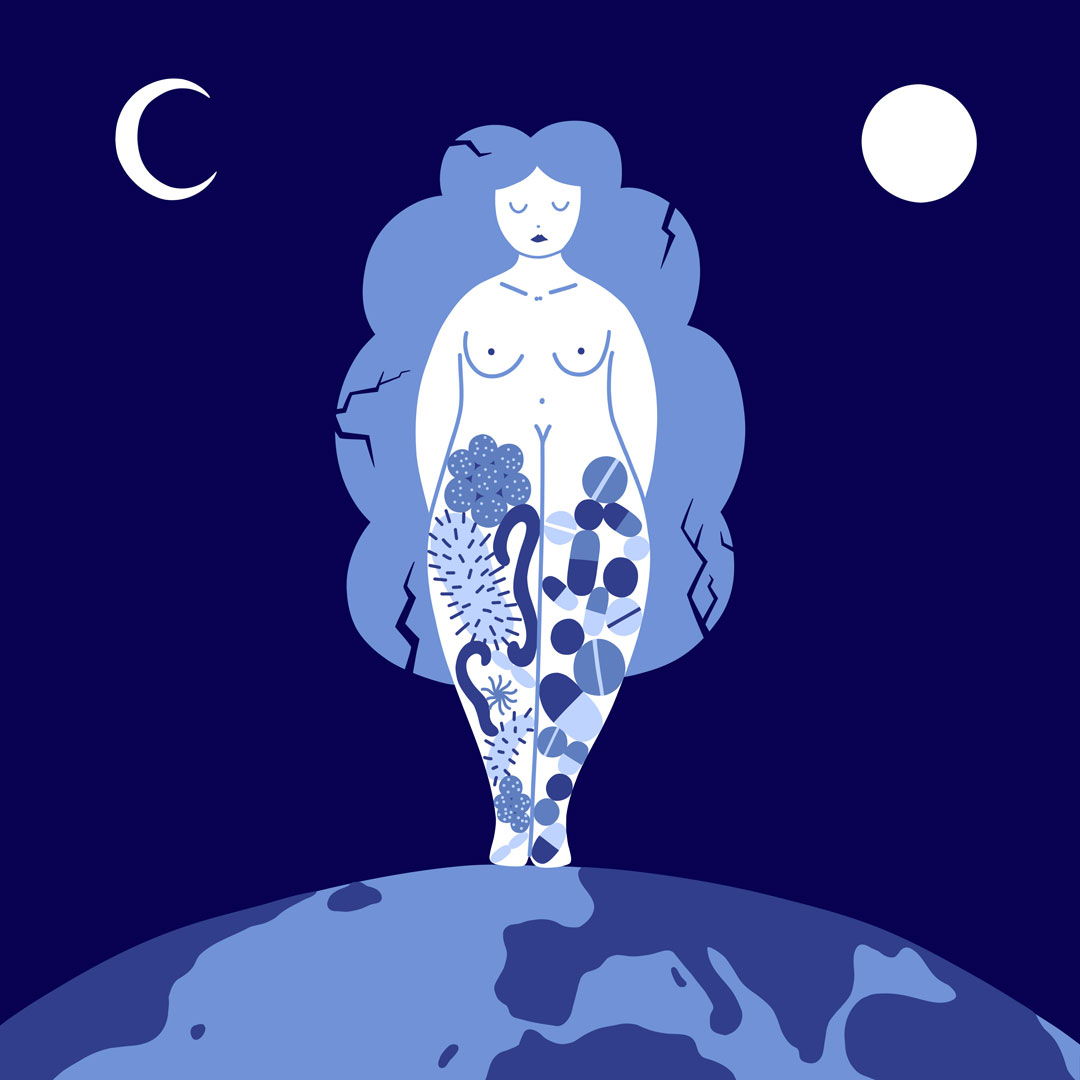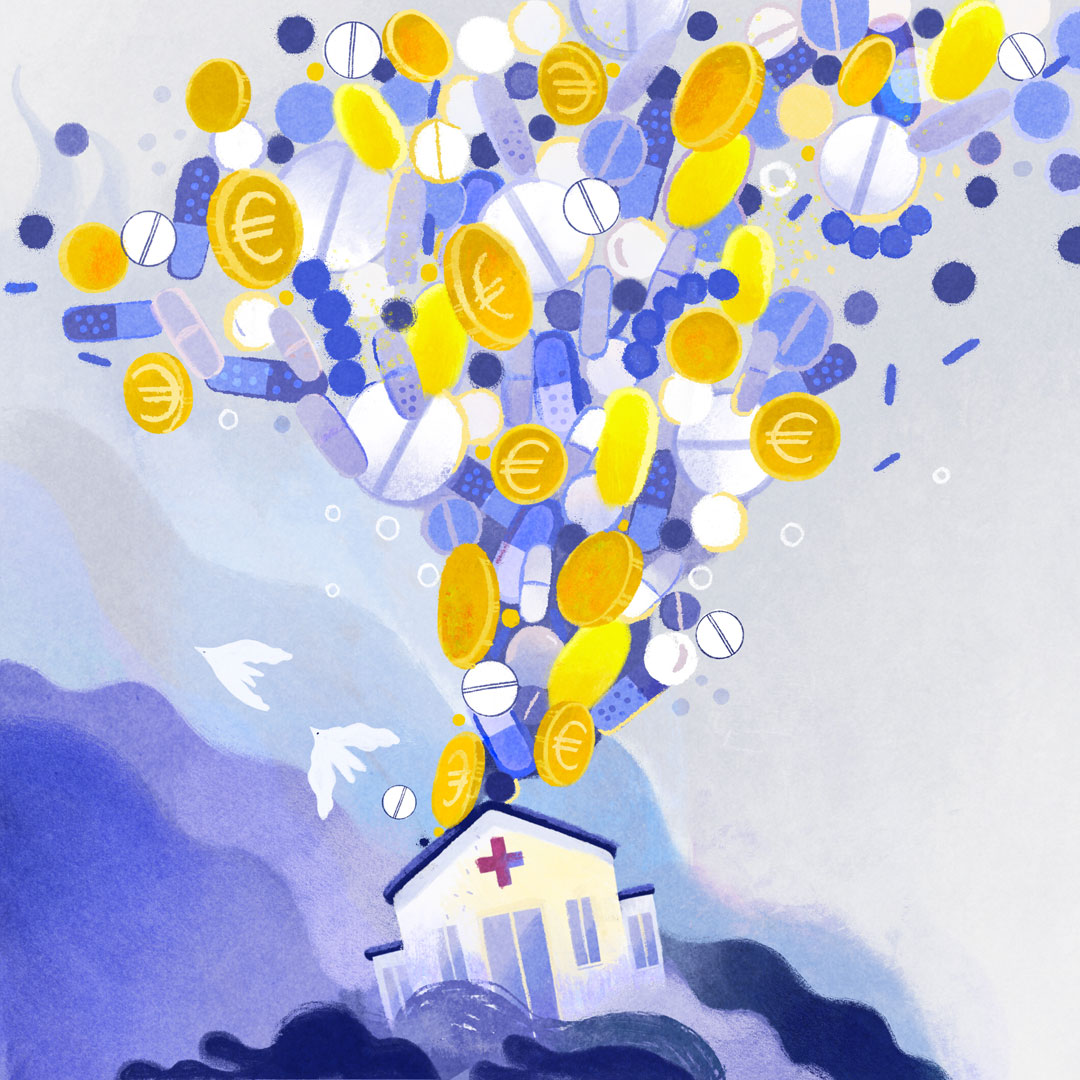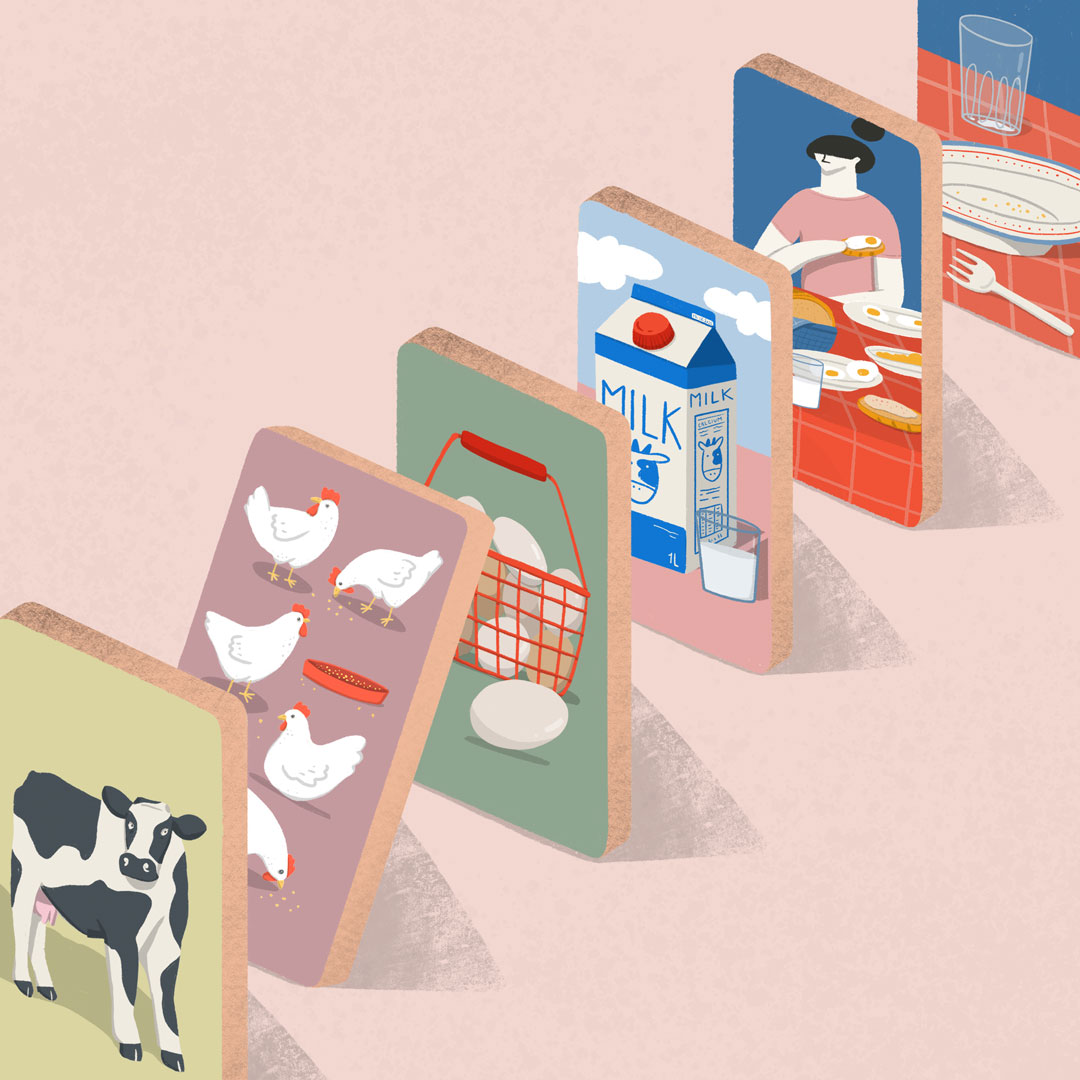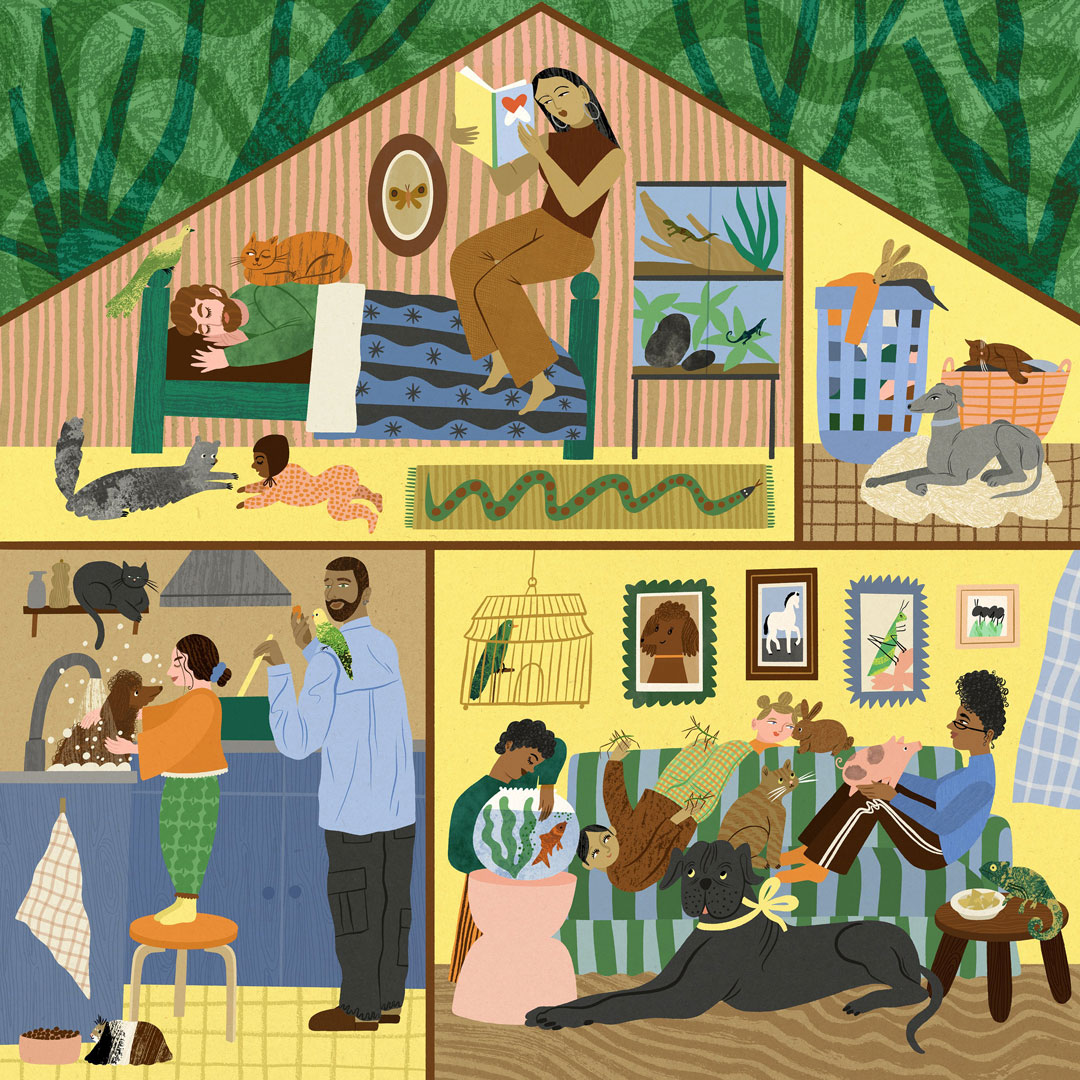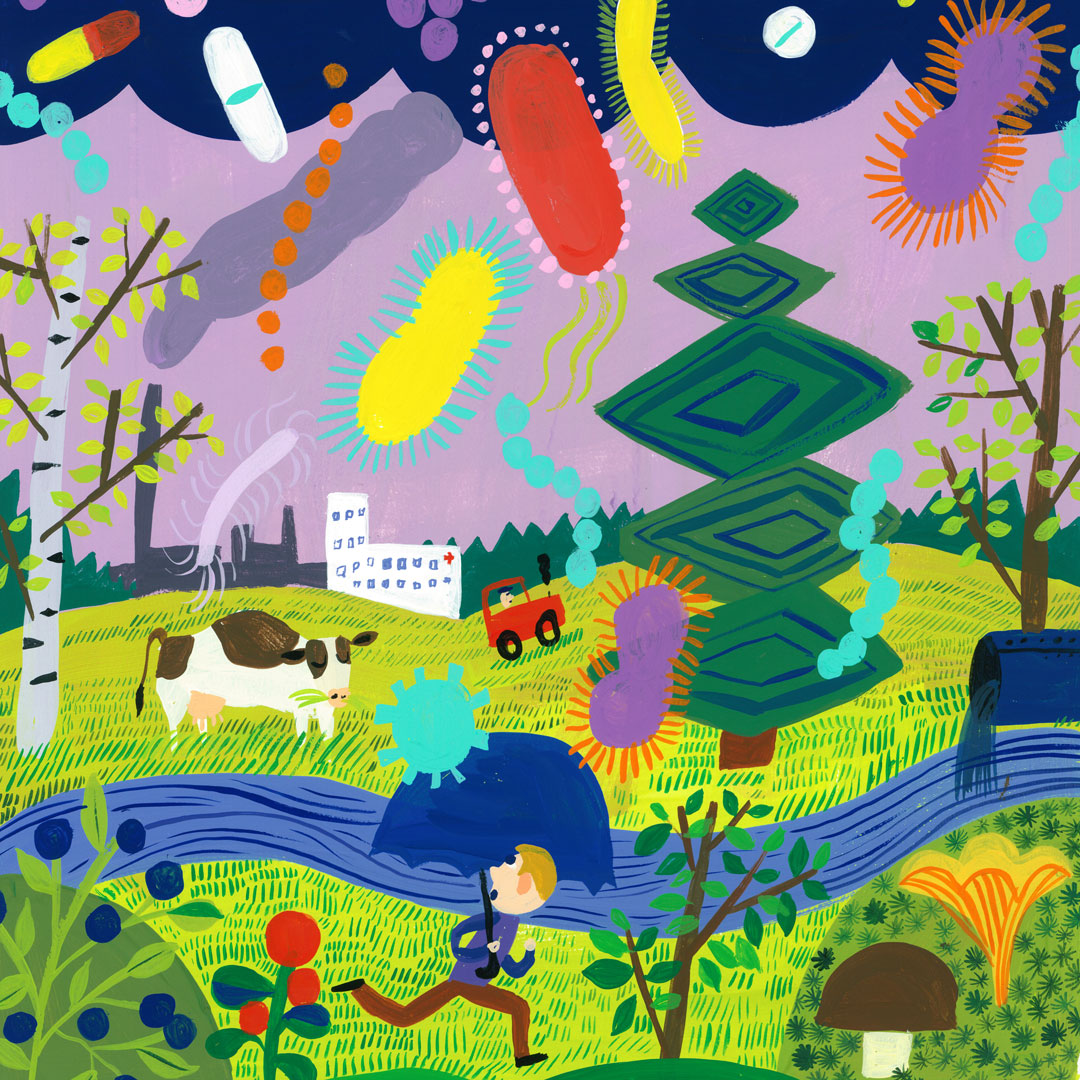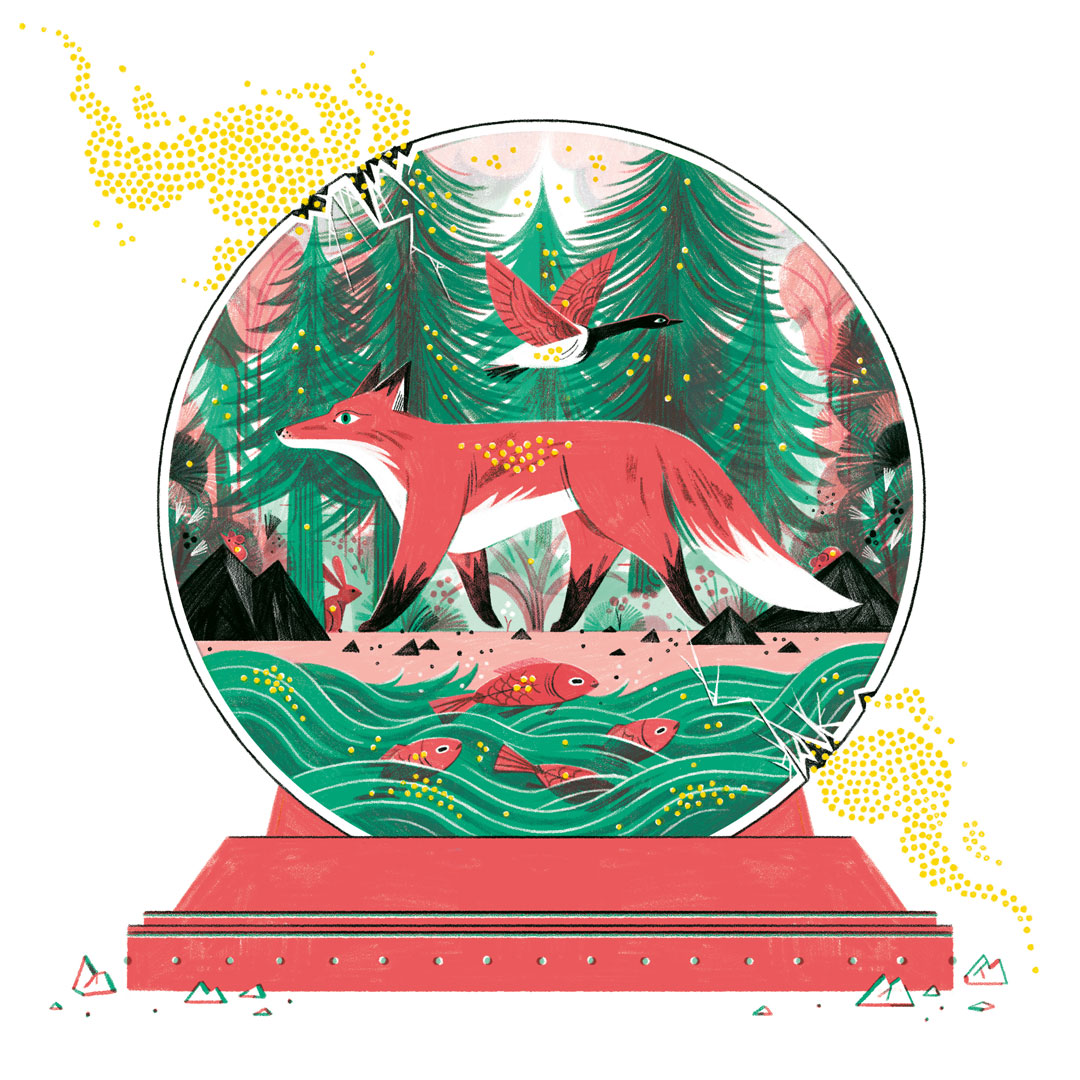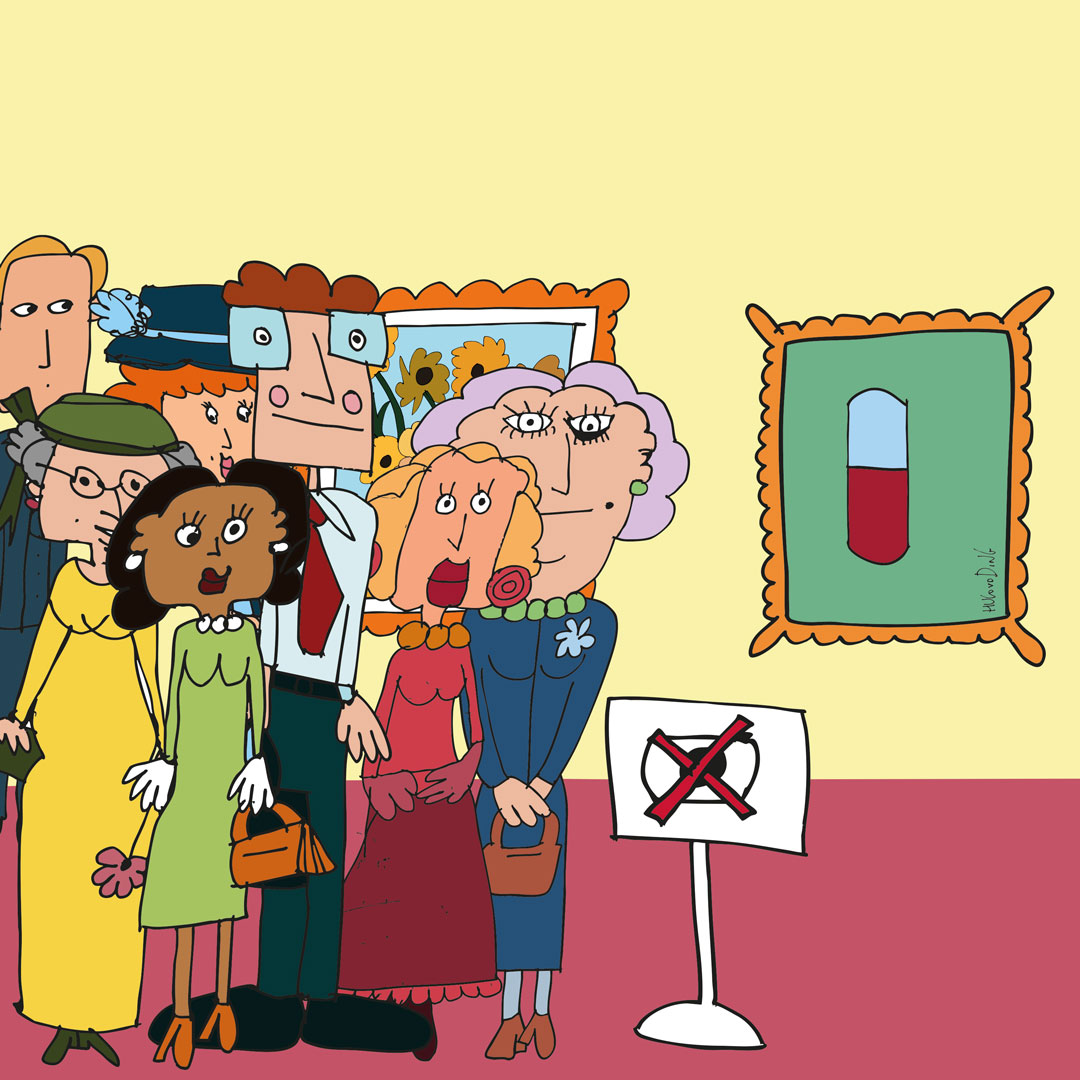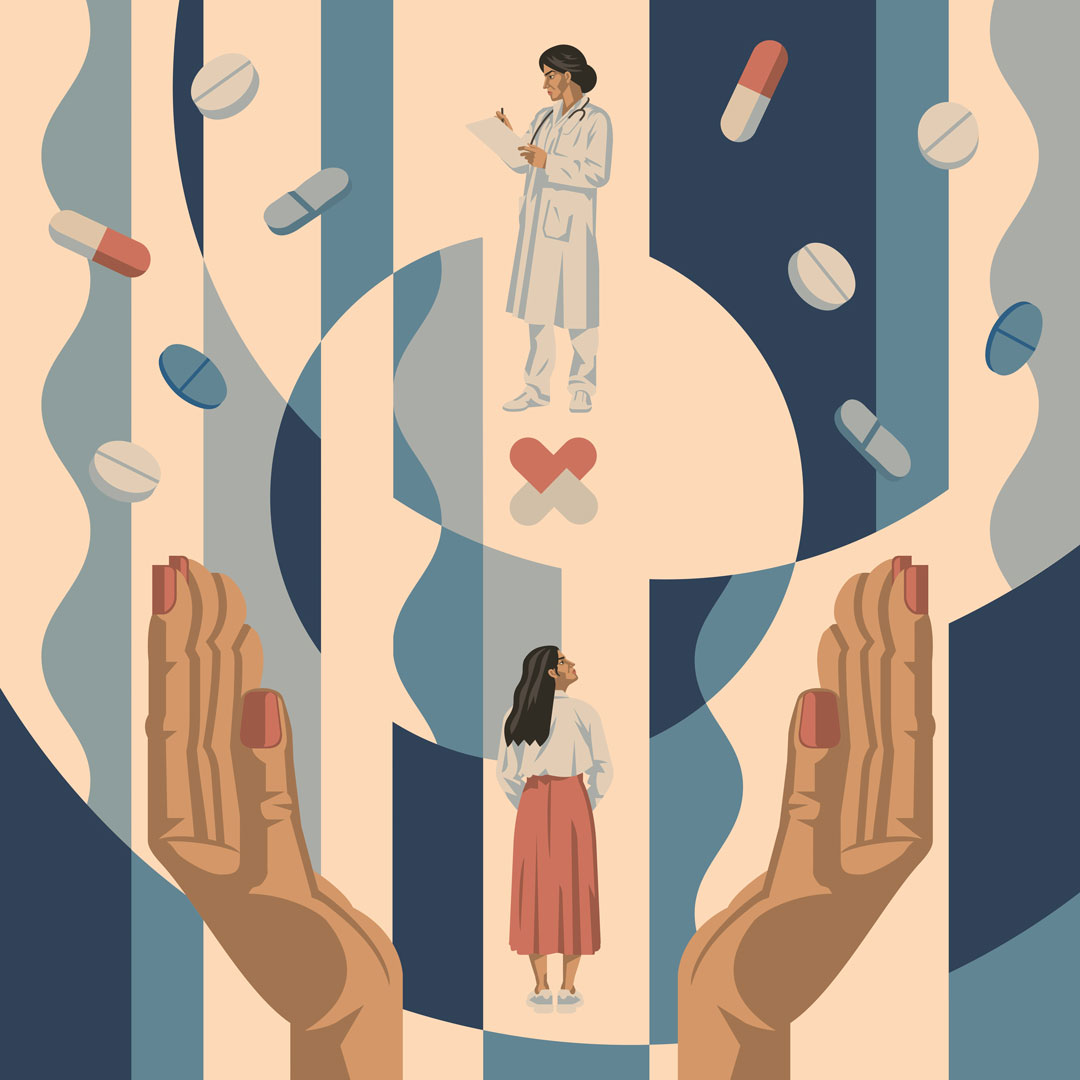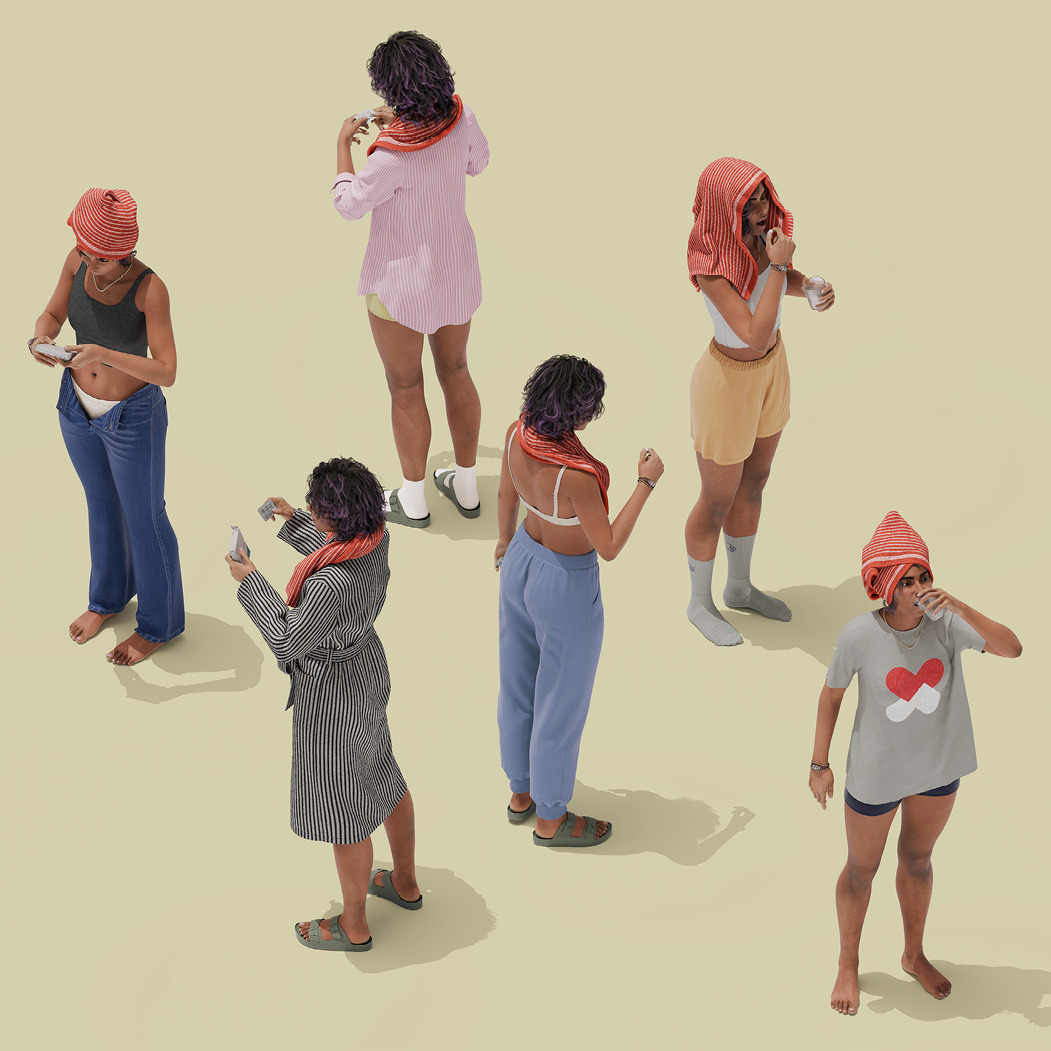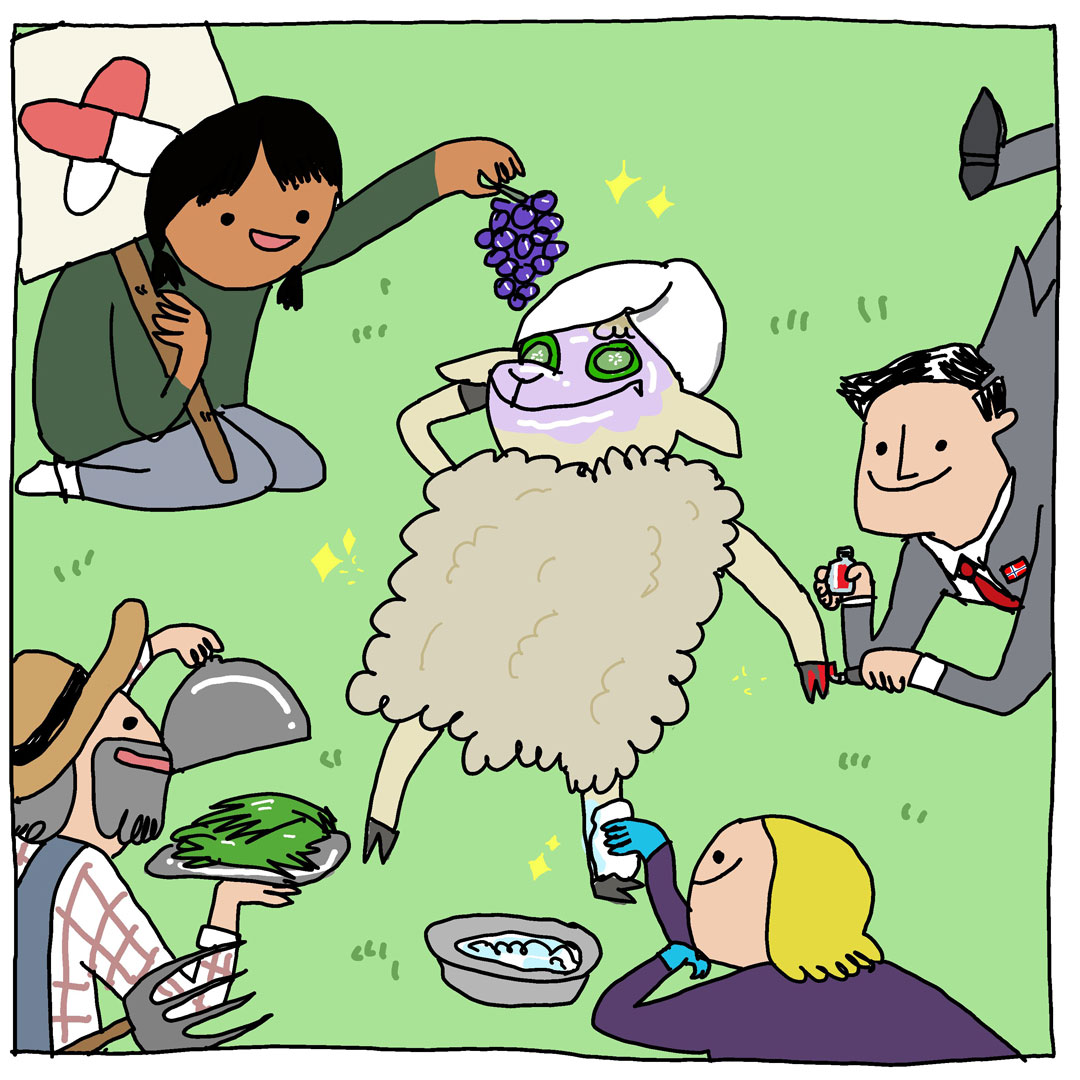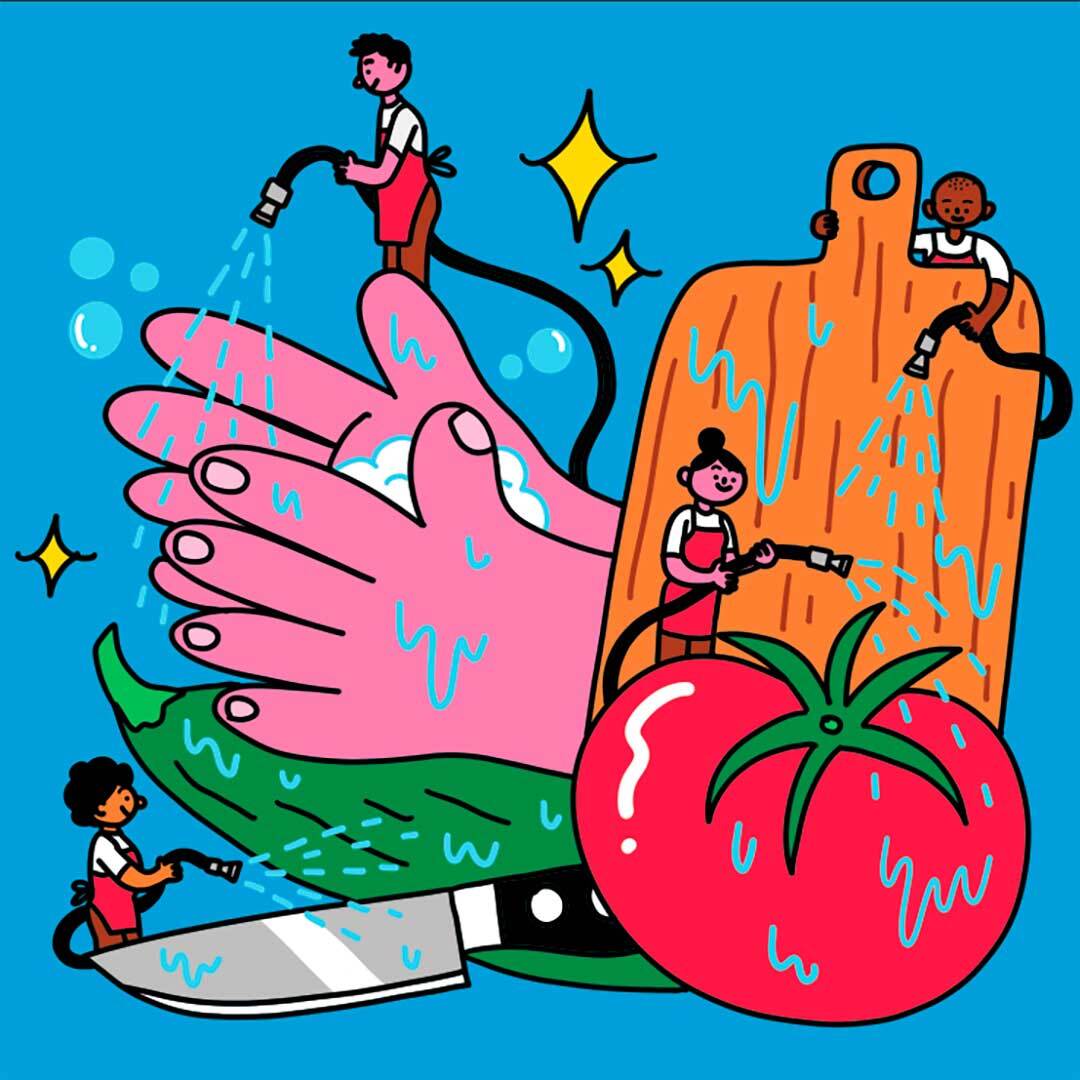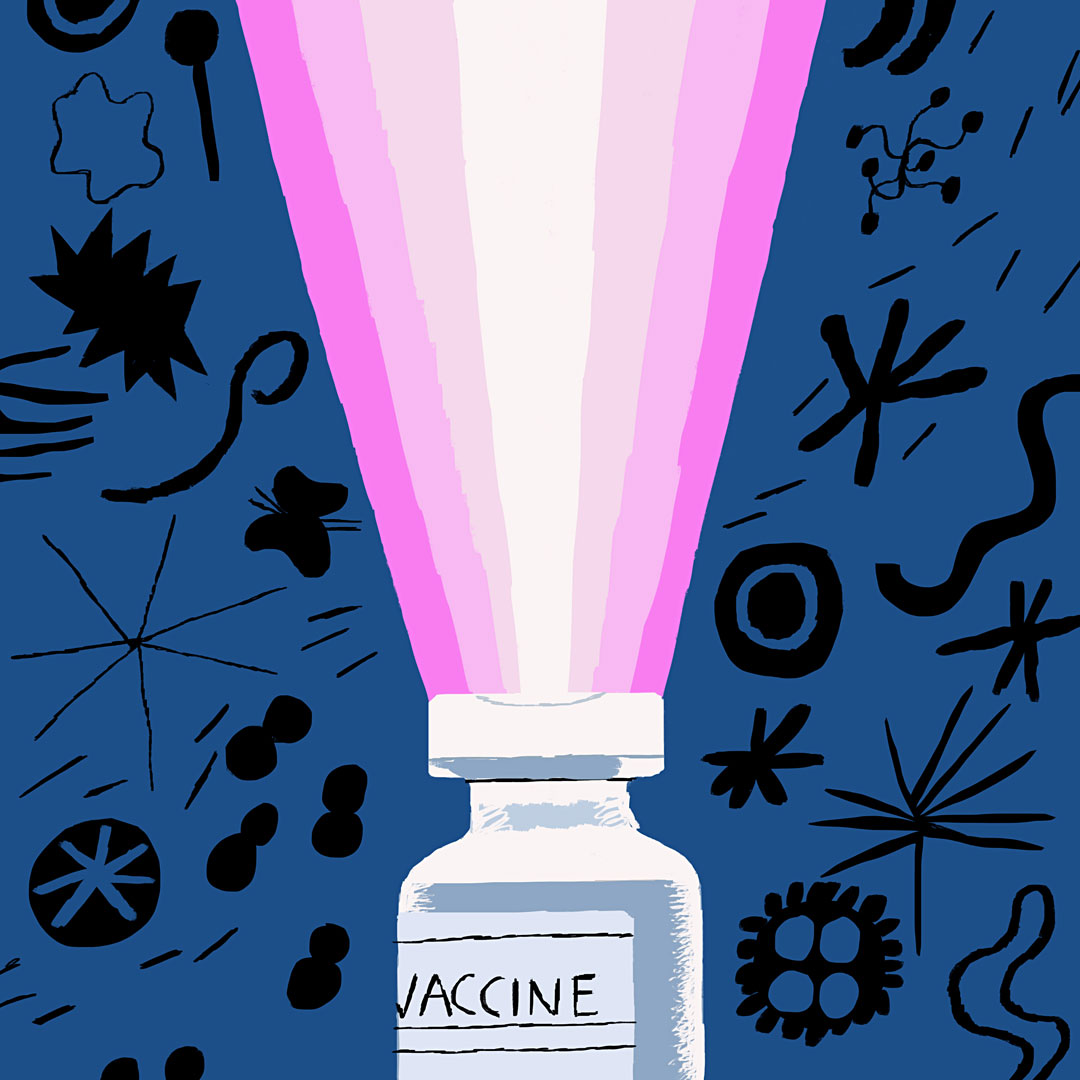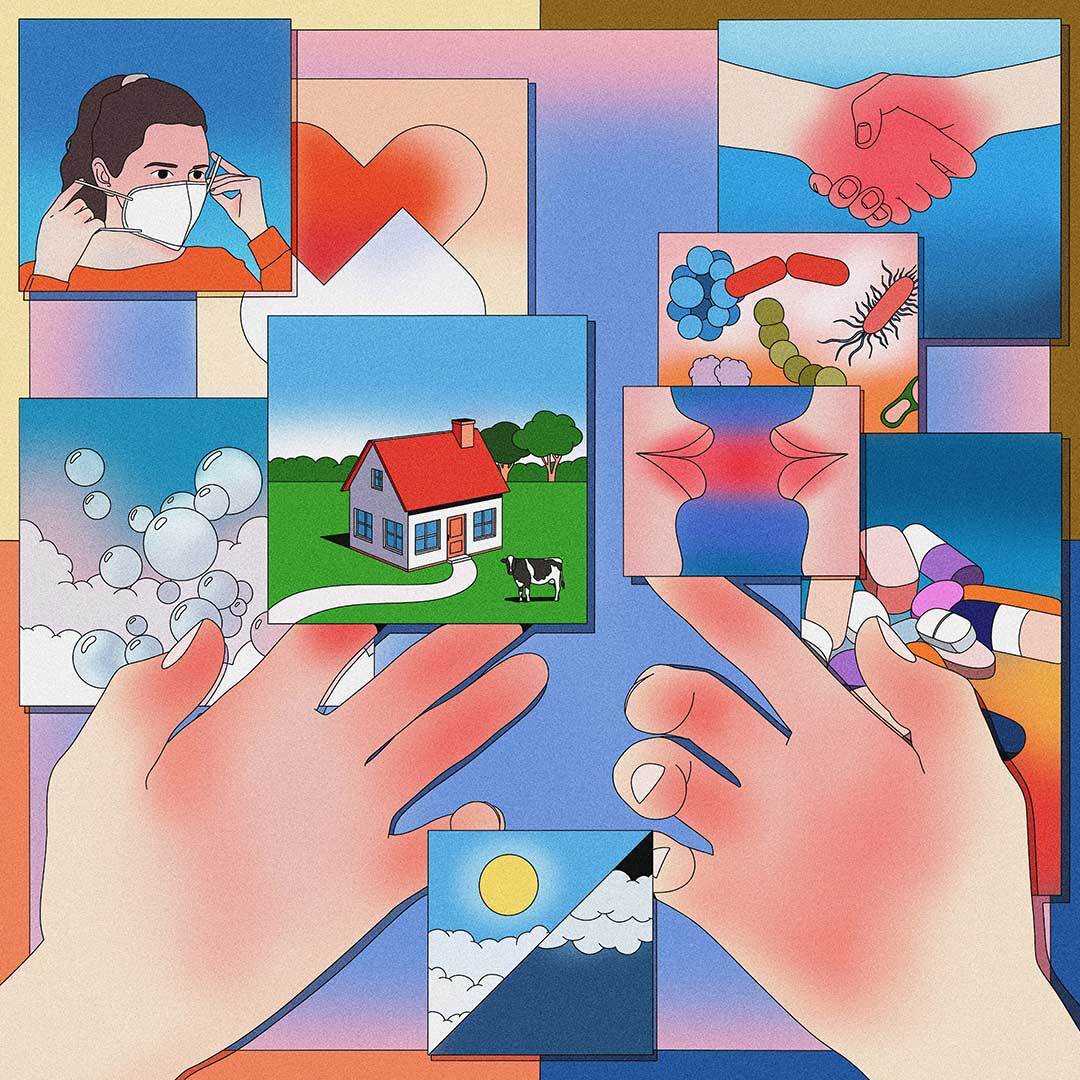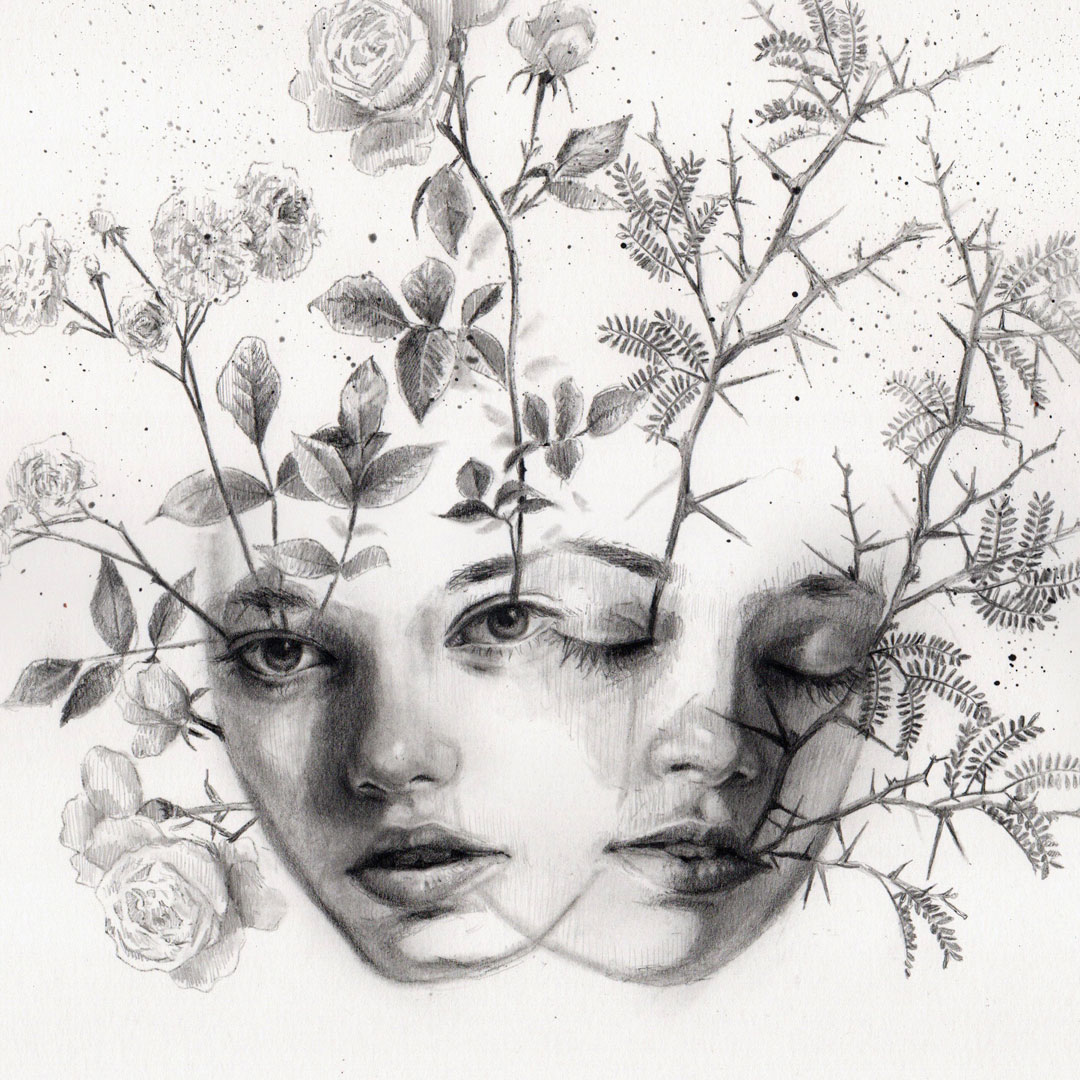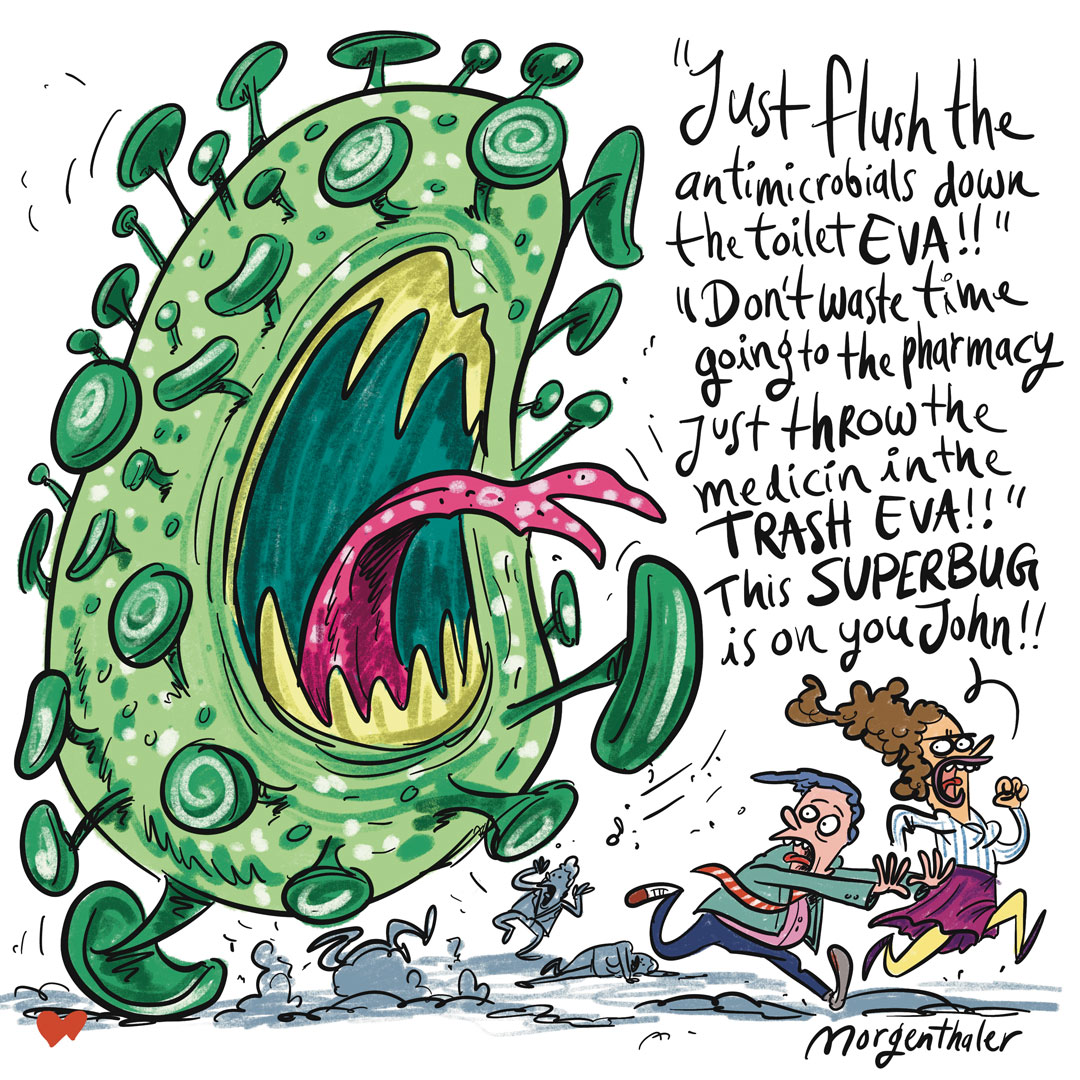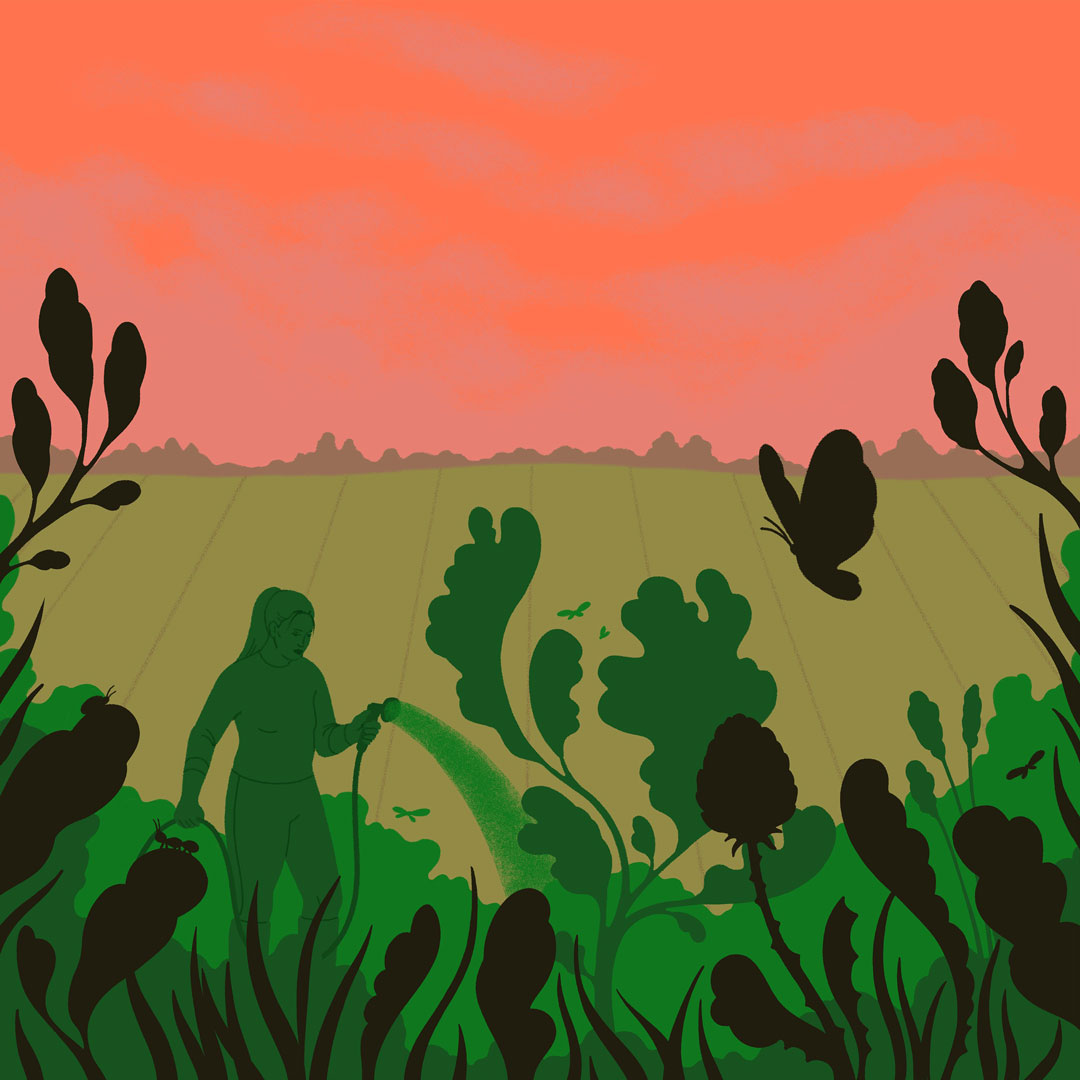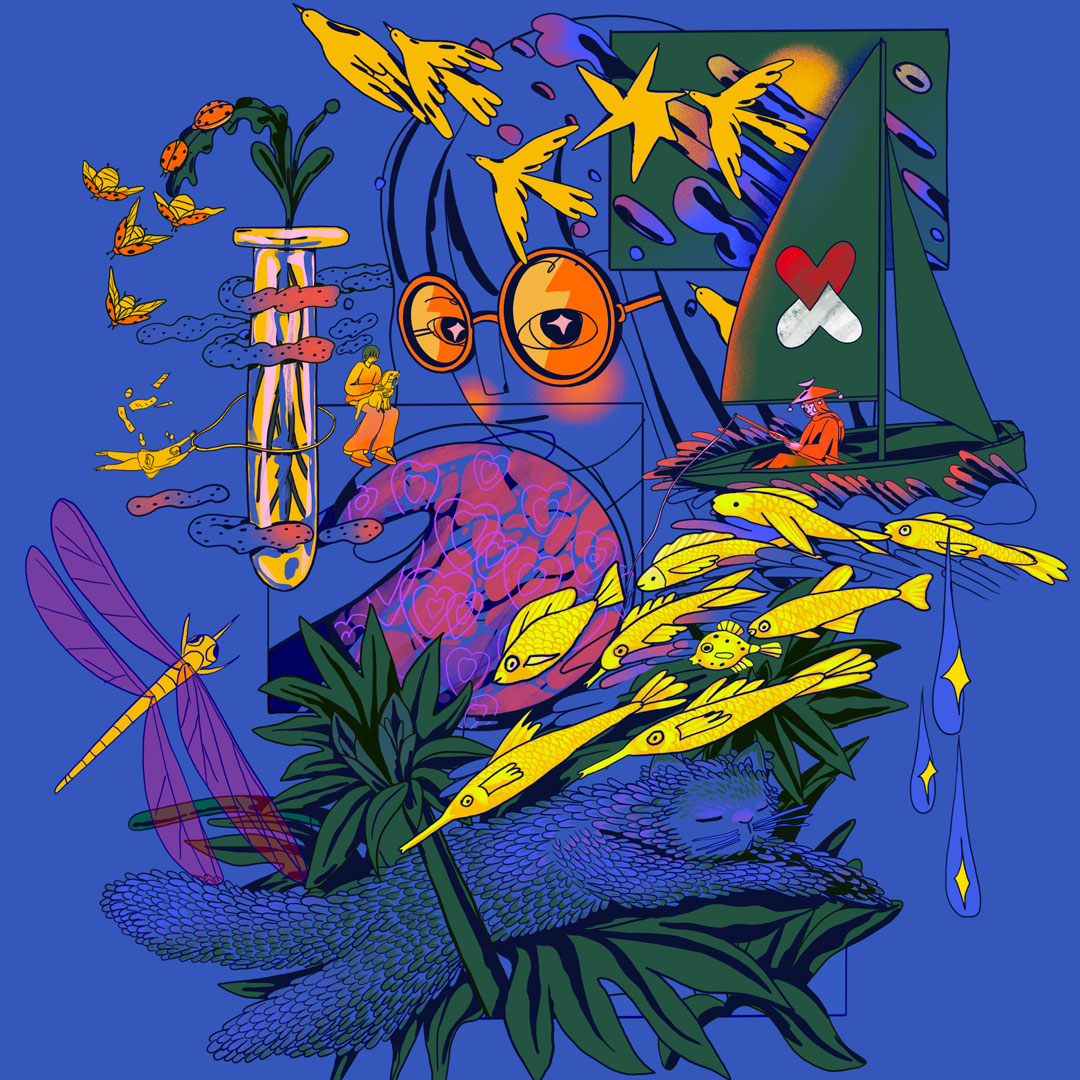Sketching Antimicrobial Resistance
Welcome to the complete story
There is a world within us and around us, invisible, ancient, and alive. A universe of microbes that help us digest food, protect our skin, and keep ecosystems balanced. Most of them live in harmony with us, but some can cause diseases. And, like every form of life, they adapt to survive. When they know how to withstand the medicines made to stop them, we encounter one of the most pressing health challenges of our time: antimicrobial resistance (AMR).
Antibiotics and other antimicrobials are among humanity’s most remarkable discoveries. They changed the course of history, turning once-deadly infections into curable ones, making surgeries safe, and helping us and our animals live longer. Yet, the more we use them, and misuse them, the faster we lose their ability to heal. This invisible transformation unfolds everywhere: in hospitals and homes, on farms, in rivers, and in the soil beneath our feet.
But this story is not one of fear. It is one of awareness, care, and connection. Antimicrobial resistance reminds us that human, animal, and environmental health are woven into the same fabric. Every gesture – washing our hands, vaccinating our pets, using antibiotics only when necessary, or disposing of them properly – helps protect the balance.
What is this campaign about?
This campaign is an invitation to look closer: to discover the beauty of a balanced microbial world and the power we hold to preserve it.
“Sketching Antimicrobial Resistance” gathers 30 illustrators from 30 different European countries to raise awareness on AMR, combining art and science. Each illustration and message tells a piece of this shared story, one that belongs to all of us: the importance of preserving antimicrobials. Different pieces of art highlight the relevance of making responsible use of medicines on human and animal health, adopting good practices of hygiene and vaccination, or disposing medicines properly to reduce the spread of AMR in the environment, as well as the impact it has on our daily lives.
Because taking care of our antibiotics means taking care of life itself.
The illustrations
To learn how to share and credit the campaign click here.

Love our antibiotics, spread the word and inspire others to act!
Antibiotics and other antimicrobials rank among humanity’s greatest achievements. These precious medicines have helped both humans and animals live longer, healthier lives. But they are losing their effectiveness. The more people understand why, the more we can do together to preserve their power. By sharing what we know and supporting responsible use, we help ensure these life-saving tools remain effective — for ourselves, for future generations, and for the planet. Join the global community of AMR Symbol Ambassadors! LOVE OUR ANTIBIOTICS!
The Illustrated Album
A different way of telling the story of AMR: visual, close, and engaging. A powerful resource for education, events, and awareness-raising activities, and a meaningful gift to share the importance of preserving the power of antimicrobials.
Also available in digital format.
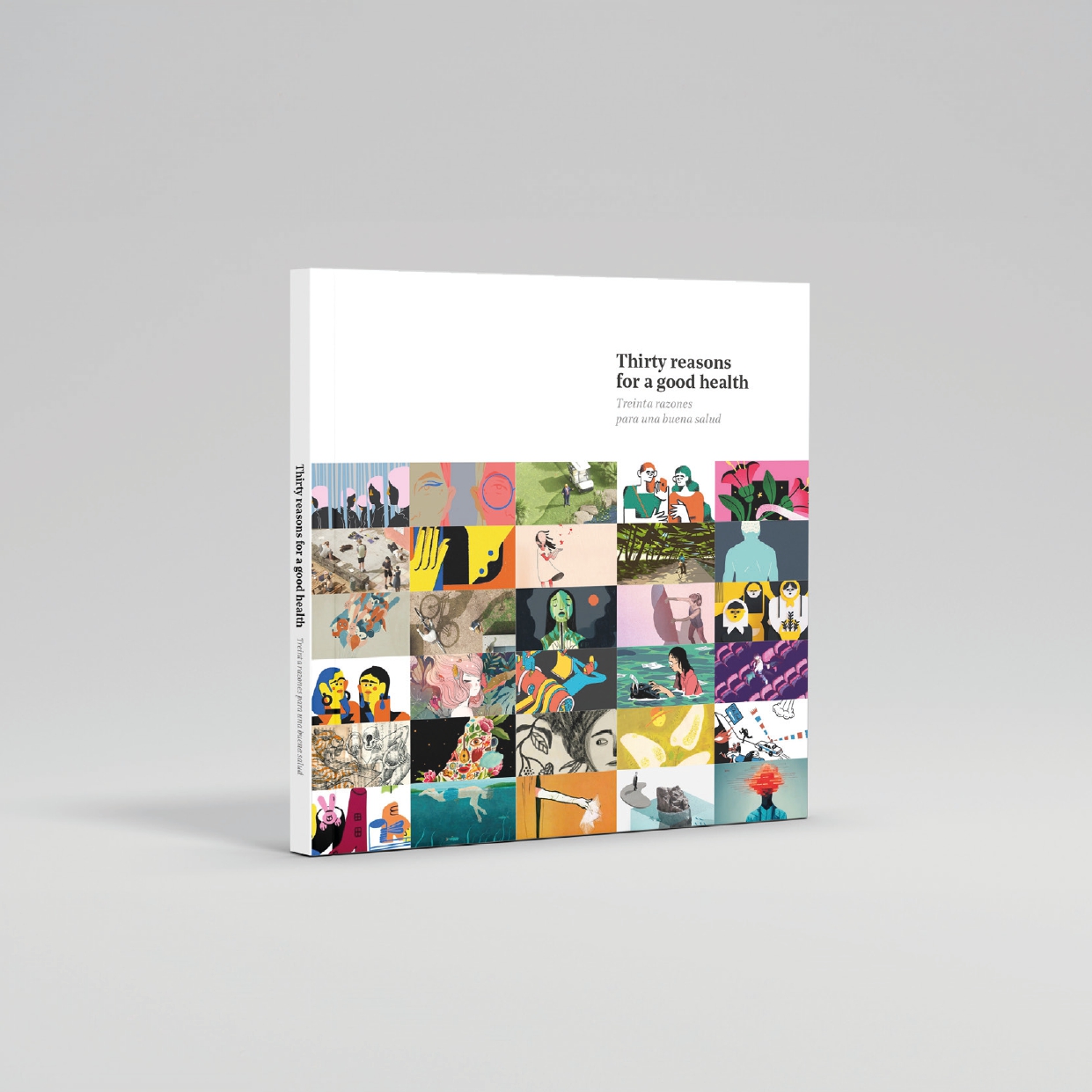

The exhibition
Accompanied by an audio guide, the exhibitions offer a creative way to make antimicrobial resistance visible and accessible to everyone in public spaces.
The microbial world is diverse
Most microbes do not cause harm. Many are essential for our bodies and the environment. They help us digest food, protect our skin, and keep ecosystems balanced. But some can turn into dangerous pathogens that can cause serious infections.
Artist’s statement
The diverse ecosystem of microbes that live all around us and in us, is invisible to the naked eye. Most play important roles in protecting us and keeping the world in balance, but some can be turned into dangerous microbes that can cause infection. This piece is an encouragement of how we all are different diverse people and we each have our role to play to bring balance and harmony.
Ashwin Chacko (Ireland)
What are antimicrobials and what do they serve for?
Artist’s statement
I aim to draw attention to the things we tend to take for granted in everyday life. Like electricity in our homes, antimicrobials were still unimaginable just over a hundred years ago. Diseases that once seemed deadly and inevitable have today become largely treatable. That is why I invite the viewer to pause for a moment, dive into this colorful and diverse world, and reflect on the invisible helpers who make it all possible.
What is antimicrobial resistance or AMR?
Artist’s statement
Imagine a bug so strong it can outmuscle medicines. That’s antimicrobial resistance (AMR). Some microbes, often known as ‘superbugs,’ stop responding to treatment and make even simple infections a serious problem for health and healthcare. And here’s the catch: they’re already among us. It’s up to all of us to get curious, get informed, and help stop this problem from multiplying.
What is antimicrobial resistance or AMR?
The illustration, in its simplicity, visualizes how bacteria and microbes mutate for their own survival. The DNA exchanges lead to the genesis of a new antibiotic-resistant bacterium (within the human silhouette), and the only one that survives despite the open capsule, which has no effect on it.
A natural process accelerated by humans
Even though antimicrobial resistance is a natural process, human actions accelerate it. The drugs slipping through the hands symbolize our inability to fully control their effects, which can lead to the rise of superbugs. The harder we fight bacteria and other microbes, the more carefully we must ensure the proper use of antibiotics and other antimicrobials.
How does resistance spread?
Antimicrobial resistance knows no borders. As humans, we’re not always aware of this. But if you look carefully at the pictures and colors, you will see microbes travelling through air, water, wastes, animals…
One Health World
People tend to forget that they are living in an ecosystem where every animal, plant, and person shares the same resources. We are part of this world as much as it is part of us.
Our health and wellbeing are deeply connected to nature and all the living creatures around us. This is a gentle reminder to appreciate our planet and to live in harmony with it, rather than endlessly exploiting and contaminating its resources.
AMR is endangering global health
This woman’s body works like a scale or measurement of the global threat that affects us all. Alongside the extensive amount of antimicrobials that are within her, the bacteria are getting stronger, becoming resistant, and undermining her health, our health.
AMR severely compromises the progress of modern medicine
Imagining a world without modern medicine… it would be a sorrowful world.
Throughout the illustration there are visual representations of life, blooming flowers, and butterflies that symbolize rebirth. Death as well, the fragility of life, of fallen hopes, collapsing medical tools and an hourglass to highlight the urgency of how decisions and choices cost time and lives.
Raising awareness by showcasing two altered rooms, weighting the pros and cons, light and darkness, hope and fear. By portraying antimicrobial resistance not just as a common biological phenomenon but as an ominous risk to medical advancement, of life saving therapies, routine procedures and global health consequences.
AMR is pressing Health systems and national economies
Artist’s statement
The weight of resistance. A wave of medicines and means moves forward, pressing against the fragile walls of hospitals. Each treatment, each attempt to heal, each struggle against resistance carries its own cost.
Behind every recovery lies time, resources, and the quiet work of people who help preserve life. As resistance grows, recovery takes longer, and the balance between healing and cost begins to strain, pressing on the structure of care. The fragile light of this weight touched us all, in hospitals, at home, in the unseen rhythm of everyday life. To guard this light is to protect what keeps us alive.
AMR is undermining animal health and welfare
There is a deep bond between humans and farm animals, built on mutual dependence. The essence of this relationship should be our attentiveness, the ability to perceive and understand the needs of animals.
This illustration shows a human standing on equal footing with the animals, returning their gaze, aware that their own existence is inextricably intertwined with theirs.
AMR is putting food security at risk
The domino metaphor highlights how antimicrobial resistance can destabilise the entire food chain. When resistance emerges, the impacts ripple outward, from food production to the meals on our tables. The falling piece emphasises that unchecked AMR could leave gaps in global nourishment, threatening food security and the wellbeing of billions. This chain reaction shows how fragile the system is. Once one block falls, the rest quickly follow.
AMR affects our pets too
We love our pets, and they are like family! The closer we live together with our companion animals, the more mindful we need to be about hygiene. This illustration visualises numerous ways in which we connect with our pets, both emotionally and physically. This way resistant microbes can easily move back and forth between us.
AMR is spreading in nature
My illustration, painted by hand with acrylic paints, emphasizes the innocence and purity of nature, as well as its vulnerability to antimicrobial resistance. It emphasizes how human activity, and improper disposal of pharmaceutical waste, can silently spread resistant microbes into our environment.
AMR reaches even the wildest places
Artist’s statement
We often view the wilderness as a closed system that is not linked to our own busy living within cities and human dwellings, as if these are separate circles of life coexisting, but never overlapping, especially in terms of health.
The depicted snow globe offers the illusion of this impenetrable system, a setting we can neither access nor change at first glance. However, once the globe is shaken, snowflakes will appear, and their whirlwind is influenced by an outside source that changes everything. The snow globe is cracked, to emphasize how these ecosystems are not, in fact, as separate as they seem.
Antimicrobials are precious medicines and must be handled with care
Artist’s statement
In this illustration, the antibiotic is treated like a masterpiece on display in a museum, much like the Mona Lisa at the Louvre. Crowds gather to admire it, in awe at its timeless beauty, its priceless value and the care it requires. Just as we cherish great works of art for the future, we must also safeguard these life-saving medicines. Scientists, like great artists, are the creators of these treasures, and it is our responsibility to protect their work, so that its value endures for generations to come.
Antimicrobials must only be taken with medical advice
I was inspired by Eastern European modernist murals and mosaics that adorn public buildings such as hospitals, schools, and similar institutions. The open hands and falling pills refer to antibiotic overuse. The two figures show a doctor writing a prescription and a patient, accompanied by the AMR symbol, to remind that antimicrobials should only be used on the recommendation of a physician.
Stopping an antimicrobial treatment too soon gives harmful microbes a second chance
Medicines should be taken exactly as prescribed, at the right time and for the full duration of treatment. Consistency and following the instructions is key to protecting both, personal health and the effectiveness of antimicrobials.
The illustration conveys this message by depicting a person taking a pill across six distinct steps. Reminiscent of a step by step instruction guide, the sequence emphasizes careful adherence to medication routines.
Antibiotics do not work for viral infections such as flu
It is important to understand that antibiotics have no effect on viruses, but only on bacteria. Therefore, they should be used responsibly and only when necessary.
I somehow had a restaurant scene in my head. I imagined viruses meeting antibiotics at the dinner table. If anyone thinks viruses can be ‘fed’ with antibiotics to harm them, they are mistaken. Viruses don’t even know what to do with it.
Healthy farm animals do not need antimicrobials
I drew a sheep living its best life, the way all animals should. A politician, a protester, a farmer, and an “ordinary person” symbolize that we can all contribute. Through good consumer habits, political action, and good farming practices, we can work together to ensure that our farm animals are healthy, happy, and do not need antibiotics. Good for animals. Good for us too because this means that antibiotics are more likely to work when we need them.
Good care helps avoid antimicrobial use in pets
A little bit of love and care goes a long way for our pets. Everyday habits, such as brushing, clean spaces, good nutrition, and keeping up with check-ups and vaccinations – help keep our pets healthy, happy and avoids the need for antibiotics.
Veterinarians help protect everyone’s health
I found it funny to think about how the concept of “bacteria” is completely incomprehensible and foreign to animals. And when I thought about it more, I realized the concept is kind of incomprehensible to me too. I know they’re there — but only because people smarter than me told me so. So, I put myself in the animals’ place and drew this picture.
Clean hands save lives
No matter where we are – at home, in healthcare settings, on farms, in schools or in kitchens – good hand hygiene is a simple but powerful way to protect people, animals and our shared health.
“The importance of handwashing is something so ordinary that it almost seems unbelievable how much it can help solve such a big problem. I liked the idea of including one of my children talking to the 300 million microorganisms we have on our dirty hands. He represents the entire European population, and I believe he does so brilliantly”.
Safe food habits, fewer infections
Simple cooking habits can help avoid superbugs. I gathered all the actions in one illustration to remind ourselves what we should wash before cooking: hands, utensils, surfaces, and vegetables. A mini cleaning team takes care of each item, to help us have a better health.
Vaccines prevent infections and reduce the spread of superbugs
Vaccines act like a light in the darkness. When fewer people or animals get sick, there’s less need to use antibiotics or other medicines. This means fewer chances for resistant microbes to shade everyone’s health.
When sick, keeping distance makes a difference
These contact precautions when ill also apply to the animals we live with or work with, as some resistant microbes can pass between humans and animals in both directions.
Think about the choices you have when feeling sick:
Wearing a mask, staying at home, washing hands… so the sickness didn’t spread, and a reduced usage of antibiotics is needed.
On the other hand, shaking hands and maintaining close contact can spread bacteria and lead to a higher usage of antibiotics. As a result, there is a higher risk of resistant bacteria developing and spreading.
The difference between the two options is like night and day.
Do not share antimicrobials
This illustration explores how treatment is always tailored to the individual. The two portraits blend into one another, yet their surroundings are very different: one features dry branches, representing misuse and the harm it can bring, while the other showcases flourishing flowers, symbolising the right treatment and the peace and healing it provides. The contrast highlights that what works for one may not work for another. Medicine is a personal matter and should never be shared.
Dispose leftovers properly
Just flush the antimicrobials down the toilet, EVA!” “Don’t waste time going to the pharmacy – throw the medicine in the trash, EVA!” “This Superbug is on you, John!!”
This is a classic satirical drawing. Instead of warning about what not to do, I wanted to show what happens when you do it, through an ordinary household conversation boiled down to one sentence.
Responsible use of antimicrobials in plant and crop care matters
This picture shows the contrast between, on the one hand, the monoculture of large scale industrial farming where pesticides are commonly used and, on the other hand, the beauty of small scale agriculture where a multitude of species are allowed to coexist.
Trusting in science is key to curbing the spread of antimicrobial resistance
Supporting research, innovation, and joint efforts across human, animal and environmental health is essential to reduce antimicrobial resistance.
My illustration talks about the entire ecosystem we need to care for, from our urban life to rural life, the need to protect and regenerate nature, responsible fishing, the importance of the veterinarian… and scientific research and discoveries that are made to protect us all.
